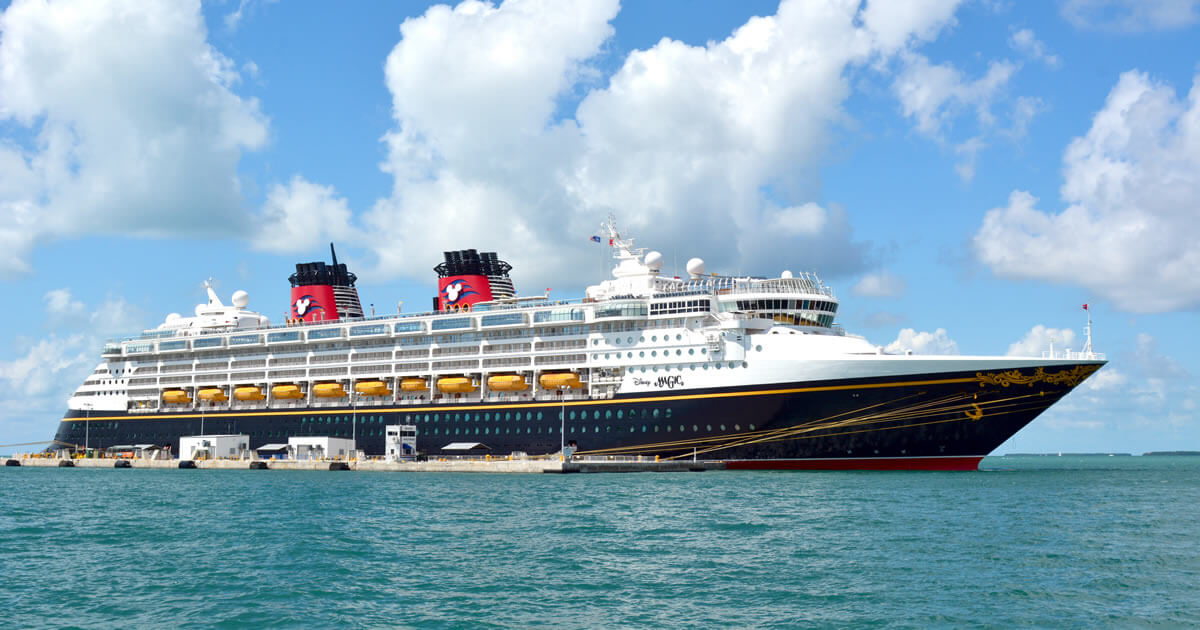Table Of Content

For instance, we’ve sailed from Galveston to the Western Caribbean, which involves crossing nearly 800 miles of the Gulf of Mexico to reach the nearest port of call. In this case, the ship has definitely reached cruising speed near 25 miles per hour. For example, Royal Caribbean’s Wonder of the Seas — the largest ship in the world — has a cruising speed of 22 knots according to Royal Caribbean. Carnival’s Mardi Gras shows a cruising speed of a slower 17 knots according to the cruise line. Ships drilling their way through the water experience more resistance than a car cruising down the highway. This results in monstrous energy consumption and big boats burn through fuel fast when traveling at top speeds.
Factors Affecting Cruise Ship Speed
However, after being refurbished, its maximum speed increased to 19 knots. Today, the Disney Wonder is one of the fastest cruise ships in the fleet. It reaches speeds of 23 knots thanks to its powerful engine system.

Why do cruise ships travel at a slower speed?
Weather conditions like strong winds and currents can also have a significant impact on a ship’s speed. There’s no official record of the fastest cruise ship as cruise ships rarely, if ever, use their top speed. However, several ships from Holland America Line, Norwegian Cruise Line and Royal Caribbean have been known to reach speeds of over 25 knots (29 mph) during sea trials. Cruise lines carefully select the speed of their ships to ensure timely arrivals at each port of call, allowing passengers sufficient time to explore and enjoy the destinations. The speed at which a cruise ship operates plays a significant role in shaping the overall cruising experience. Additionally, speed restrictions may be implemented during specific weather conditions.
Why Do Cruise Ships Use Knots Instead of Miles Per Hour?

In the real world, however, ships are at the mercy of Mother Nature. On the flip side, nautical miles, established in 1929, are tied to the Earth’s latitudinal degrees – one nautical mile equals one minute of latitude. Even so, you may never see your cruise ship sail as fast as they can on your trip. At full capacity, the ships can hold nearly 6,700 passengers and 2,200 crew. In other words, on a single ship you can have nearly 10,000 people at a single time. And with nearly 2,800 staterooms, the largest ships are just slightly smaller than The Mirage in Las Vegas when it comes to the number of rooms.
This cruise ship can carry nearly 10,000 people. Here’s more of what sets Icon of the Seas apart - CNN
This cruise ship can carry nearly 10,000 people. Here’s more of what sets Icon of the Seas apart.
Posted: Mon, 29 Jan 2024 08:00:00 GMT [source]
How fast do cruise ships go: Unraveling the Speed Secrets of Cruise Ships
Did you know cruise ships will purposely slow down when arriving in port? You will rarely arrive earlier than expected, and that is because cruise lines are charged docking fees based on the amount of time spent in each port. Sailing boats come in various forms, and each of them has a different max speed. Usually, sailboats are much smaller ships than cruise ships, and they rely on the wind to power them, so they tend to move at a slower pace. Ocean liners tend to have greater traveling speed because they’re built with transportation in mind.
How Fast Do MSC Cruise ships go?
What is the Top Speed of a Cruise Ship Ever Recorded? - Cruise Hive
What is the Top Speed of a Cruise Ship Ever Recorded?.
Posted: Fri, 07 Jul 2023 07:00:00 GMT [source]
That’s 66,000 gallons every day, which creates a lot of pollution. In recent years, there has been enormous regulatory pressure to make big ships friendlier to the environment and the ocean that they sail on. For farther destinations, a ship may take on additional speed in open waters where it can travel more efficiently. Called the Dutchman’s log, this device became the standard tool for measuring speed until the 16th century. 1 knot is equal to 1 nautical mile per hour, or 1.15 mph and 1.852 km/h.
So, How Fast Do Cruise Ships Go?
Another famous ship from cruising’s golden age, Holland America’s SS Rotterdam (now a floating hotel) cruised from 1958 through the early 2000s. Sea trials aren’t conducted under the same conditions for every ship, so it’s impossible to say which cruise ship could actually go fastest. Therefore, one knot equals about 1/5th of a nautical mile per hour. Since a nautical mile is equal to 6076 statute miles, one knot represents just shy of 2% of a statute mile per hour. Another time a cruise ship may speed up is if the wind is working against it and inherently slowing it down. Remember, daily distance is just one aspect of your cruise experience.
Why Cruise Ships Don’t Always Sail This Fast
The average cruising speed of a cruise ship typically ranges from 19 to 23 knots, which is about 22 to 26 miles per hour. However, this is just an average and can vary depending on various factors. One of the main factors that determine the speed of a cruise ship is the power of its engines. Cruise ships are powered by diesel reciprocating engines, which supply the necessary power to turn the propeller shafts that propel the ship through the water.
Well, if we stick to the average cruising speed of about 20 knots, which is roughly equivalent to 23 miles per hour, cruise ships go about 550 nautical miles in 24 hours. However, don’t start packing your bags just yet, as actual distances can vary depending on multiple factors. The maximum speed for most cruise ships is between knots per nautical mile, which is a maximum of 35 miles per land-based mile. Currently, Cunard’s Queen Mary 2, a transatlantic vessel, has the fastest speed for a modern day passenger ocean liner with 30 knots as her maximum speed. Fuel consumption is another crucial factor affecting the speed of cruise ships.
By adhering to these regulations, cruise lines demonstrate their commitment to responsible cruising practices. Speed limitations and regulations are in place to ensure the safety of passengers, protect the marine environment, and promote responsible cruising practices. Cruise ships are subject to various restrictions and guidelines that govern their speed and operation in different areas. Since a knot is about 1.15 miles per hour, a cruising speed of 22 knots comes out to roughly 25 miles per hour. At that time, it was the longest and biggest ship in the world — a title now held by Royal Caribbean’s Freedom of the Seas. The QM2 is the only transatlantic cruise ship currently in operation, and it offers one annual cruise that crosses the Atlantic.
The number and size of these engines, along with the ship’s propellers, determine the thrust and propulsion capabilities. Ships with a higher number of engines and larger propellers can achieve higher speeds. The size and design of a cruise ship play a significant role in determining its speed. Larger cruise ships with more powerful engines and streamlined designs generally have higher maximum speeds. These ships are often equipped with advanced propulsion systems that allow for greater speed and maneuverability.
It directly impacts fuel efficiency, passenger comfort, and itinerary planning, all of which contribute to a memorable and enjoyable vacation experience for cruise ship passengers. Weather conditions and ocean currents also come into play when determining cruise ship speed. Strong headwinds can slow down a ship’s progress, while favorable tailwinds can increase its speed. Cruise lines monitor weather forecasts to adjust speeds accordingly, ensuring passenger comfort and maintaining timely arrivals at each destination. Weather conditions and ocean currents also impact cruise ship speed.
In general, cruise ships up to 1,100 feet long must carry as much as two million gallons of fuel to make the trip between ports of call. In comparison, a private motor yacht that’s 60 feet long carries up to 1,200 gallons while the Exxon Valdez holds 55 million gallons of fuel. There are no official records regarding how fast a cruise ship goes because it varies depending on factors like weather conditions, sea state, etc. They seem slow, but cruise ships can go much faster than we think. Our beloved floating resorts aim to strike a perfect balance between getting you to your next margarita and ensuring you don’t spill it in the process. It’s about harnessing the power of modern vessels and also ensuring smooth sailing with an emphasis on comfort and efficiency.

No comments:
Post a Comment